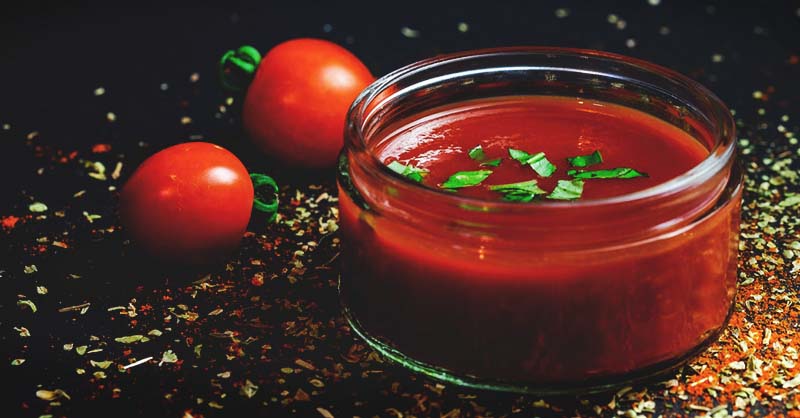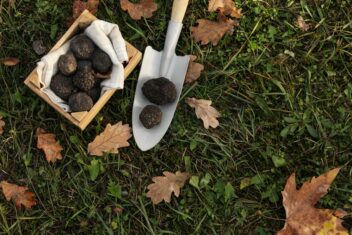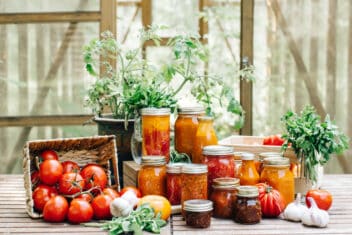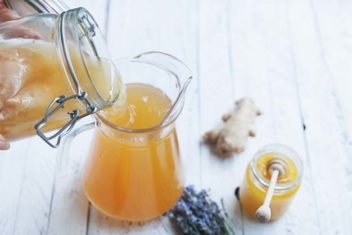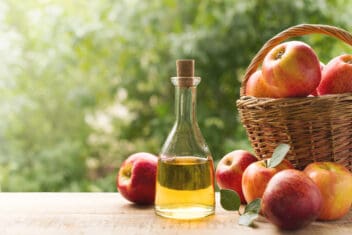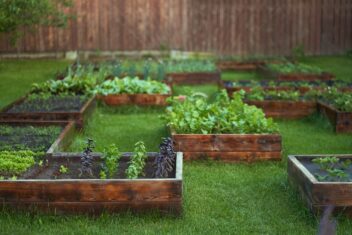Salsa should be in its own food group. It’s a delicious addition to chips, goes great on eggs, and is lovely served on a variety of meats.
However, did you know you don’t have to be limited to the store-bought salsa? You can make your own from fresh ingredients.
Plus, if you grow your own tomatoes, you can make your salsa for a fraction of the cost of what you purchase at the store.
With all of this in mind, let’s learn how to make salsa. I’m going to share the recipe (which I found in my Ball: Blue Book Guide to Preserving), share the process of making the salsa, and also share how you can preserve it for later use.
Here’s all you need to know for making and canning salsa successfully:
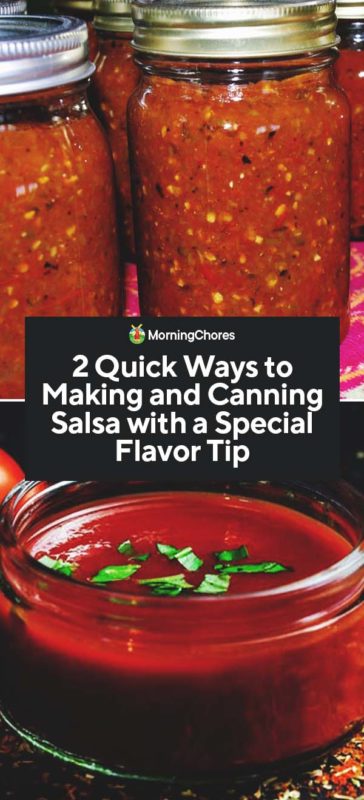
You’ll Need:
- 7 cups tomatoes, chopped, cored, peeled, and seeds removed
- 2 cups sweet peppers, chopped and seeds removed
- 1 cup chopped onion
- ½ cup chopped jalapeno pepper
- ¼ cup chopped cilantro
- 3 cloves minced garlic
- 1 tablespoon marjoram, fresh or dried
- 1 teaspoon salt
- ½ cup apple cider vinegar
- 2 tablespoons lime juice
This recipe is intended to make approximately 4 pints of salsa.
1. Prepare Your Veggies

Start the process of making the fresh salsa by prepping each of the vegetables. Be sure to begin by washing each vegetable to make sure all dirt and bugs have been removed from the produce.
When working with the tomatoes, it’s a good idea to scald them first. You do this by putting a pot of water on the stove and bringing it to the point where the water is hot but not boiling.
Once the water is hot, turn the stove off, and begin placing tomatoes in the water for approximately 1 minute.
After the minute, place the tomatoes in a sink filled with cold water. The skins should easily peel away from the tomato at this point.
With the skins removed, slice the tomatoes to remove the cores and seeds. Chop the tomatoes into smaller chunks.
The peppers should have the seeds removed and be chopped into smaller pieces. The onion should have the outer layers removed and be chopped into smaller pieces as well. You can do this by hand or by using a food processor.
When all the veggies have been washed and prepped, you’re ready to move forward with the process.
2. Bring to a Boil
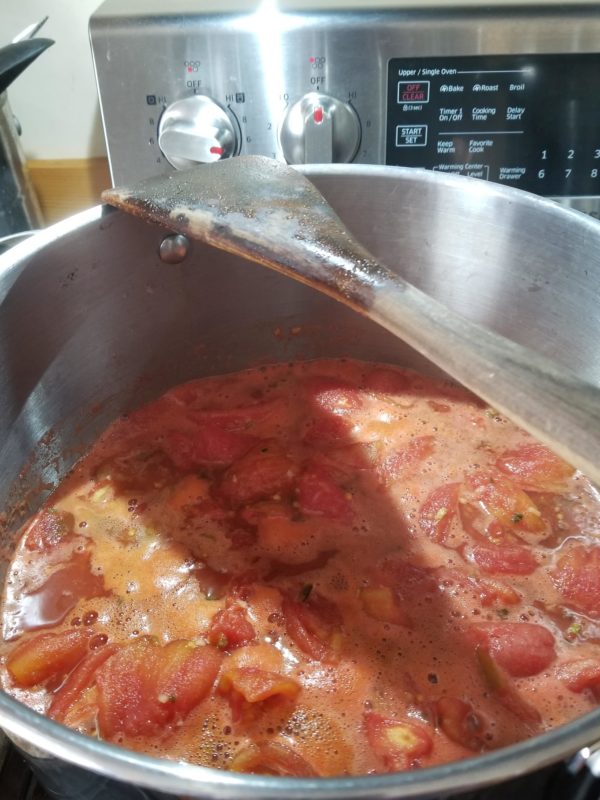
Place all the prepped veggies into a pot on the stove. Also, place all the other ingredients from the list above in the same pot.
Give the ingredients a little mix to briefly incorporate everything together. Turn the stove on high heat to bring the concoction to a boil.
Be sure to stir as the mixture is coming to a boil to keep anything from sticking to the bottom of the pot. Once everything boils, lower the heat and allow the salsa to simmer for approximately 10 minutes.
3. Fry the Salsa
This is an optional special step to add flavor. My husband and I love doing this because it makes a world of difference in the taste and texture of your salsa.
Place a tablespoon or 2 of oil in a frying pan. Ladle the hot salsa into the frying pan when the oil is warm.
Stir the salsa in the pan for 2 to 5 minutes. Frying will give the ingredients more flavor and also helps to thicken the salsa as well.
When the time is up and your salsa has reached the desired consistency, place the salsa carefully back in the original pot.
Again, this step is optional and can be skipped if desired.
4. Prep Your Jars for Canning
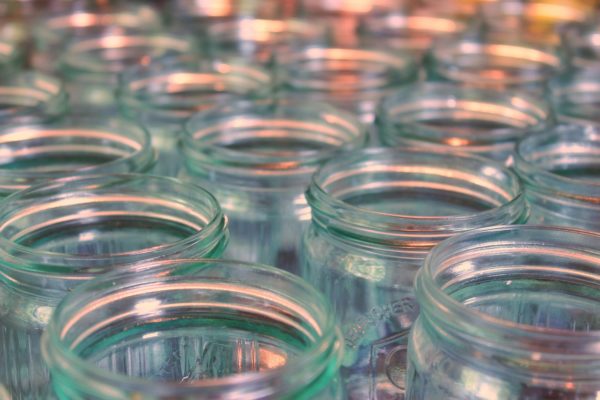
It’s important to prep the jars for canning salsa before using them. You can choose to complete this step before you begin canning salsa, while you’re waiting on the salsa, or even put a second set of hands to work on this task while you’re making the salsa.
The jars will need to be washed in warm soapy water. Be sure to rinse and dry the jars when done. The next step is to put the jars in the oven to sanitize them.
If you have a dishwasher, you can wash and dry the jars in the dishwasher while you’re preparing the salsa. Some dishwashers also have a sanitize setting. If your dishwasher does, it could do all the work for you with the jars.
Once the jars have been sanitized, put a small pot of water on the stove and fill it with water. Bring the water to a boil and turn the stove off.
Place new lids in the water for 1 minute to sanitize them. When finished, use a pair of tongs to pull the lids from the water and place them on a towel or in a dish drainer to dry.
Run the rings through the same process after the lids have been sanitized. When everything has been cleaned and sanitized, you’re ready to get busy preserving the salsa.
5. Process the Salsa
Use a soup ladle to put the hot salsa into a freshly sanitized jar. Use a canning funnel to help the salsa into the jar instead of all over your workspace.
Be sure to leave ½-inch of headspace at the top of the jar to ensure the lids can seal properly. Slide a butter knife down the inside of the jar to release any air bubbles.
Once the air bubbles have been released, place a sanitized lid, and ring securely on the jar. Place the jars into a water bath canner.
If you’re new to canning salsa is a great place to start because it uses a water canner. Water canning is less intimidating for beginner canners because it’s only boiling water and nothing is pressurized.
After the jars are in the water canner, fill the canner with water until the top of the jars is covered. Place the canner on the stove on high heat and bring the water to a boil.
Don’t begin the timer for processing time until the water has started to boil. When the water boils, process the jars for 15 minutes.
When the timer is up, turn the stove off, and move on to the next step of the process.
6. Wait and Store
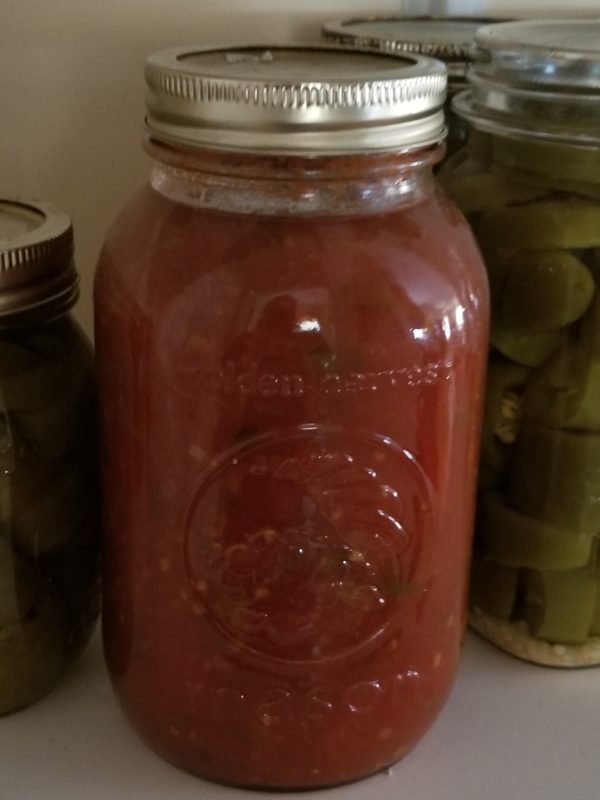
Remove the hot jars carefully from the water canner using jar grabbers. I like to use the jar grabbers with my dominant hand and secure the jar with a dish towel using my non-dominant hand. This ensures the jar doesn’t slip.
Place the jars on a surface that won’t scorch or on a surface that has been padded with multiple layers of towels to keep the surface from being scorched.
Leave the jars alone for 24 hours. During this time, you should hear a ‘ping’ sound. This is the sound of the lids suctioning and sealing the jar.
After 24 hours is up, run your finger over the top of each jar. The surface should feel smooth. If you run your finger over the top of a jar and feel a button sticking up in the center of the lid, the jar didn’t seal.
Also, if you accidentally push the button down with your finger, the jar didn’t seal properly. In this case, either pop the jar in the refrigerator to use first or reprocess the jars with a fresh lid.
For the jars which do seal properly in the 24 hour period, be sure to label them with the date and what’s in the jar, and store the jars in a cool, dark location for later use throughout the year.
A Second Salsa Option
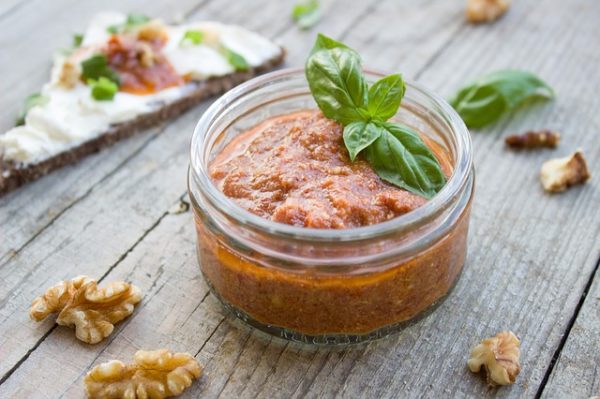
If you want homemade salsa but want an even easier method, consider purchasing the salsa mixes from your local store.
I’ve been known to use the packets because they were on sale and cheaper in the long run when I had to purchase the seasonings to accompany the salsa.
However, now that I have a larger herb garden, it’s more practical to use my own herbs and spices.
When using the packets, you place the tomatoes, peppers, onion, and contents of seasoning packet into a pot and cook the mixture together as stated in the above recipe. Follow each of the remaining steps, and you should receive similar results.
Salsa seasoning packets are a way to simplify the process if you’re in a hurry or find a deal.
Well, you now know how to make salsa, utilize your tomato harvest in a new way, how to preserve salsa for later use, and even how to make salsa faster with store-bought seasoning packets.
Now you can enjoy homemade salsa year-round with this recipe and preservation method. You could also pass salsa along to friends and neighbors as a friendly gesture or as a DIY gift for the holidays. The possibilities are endless.
